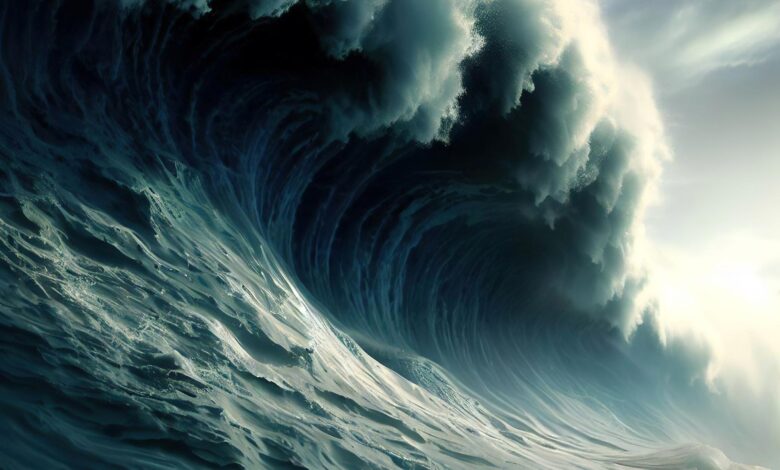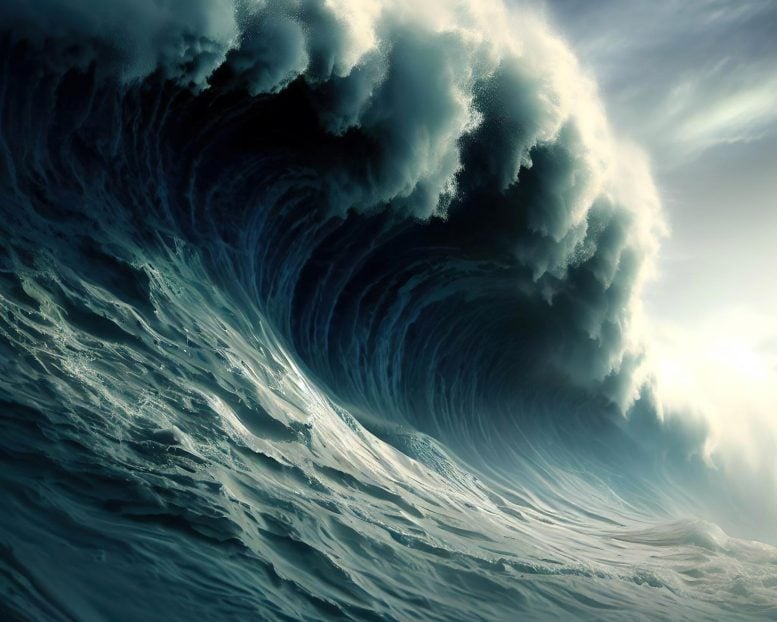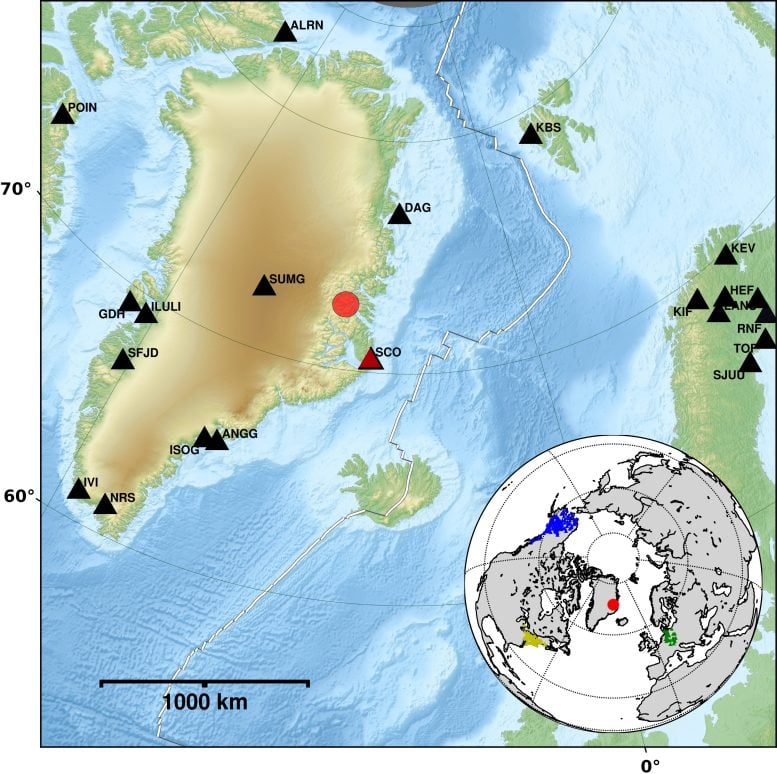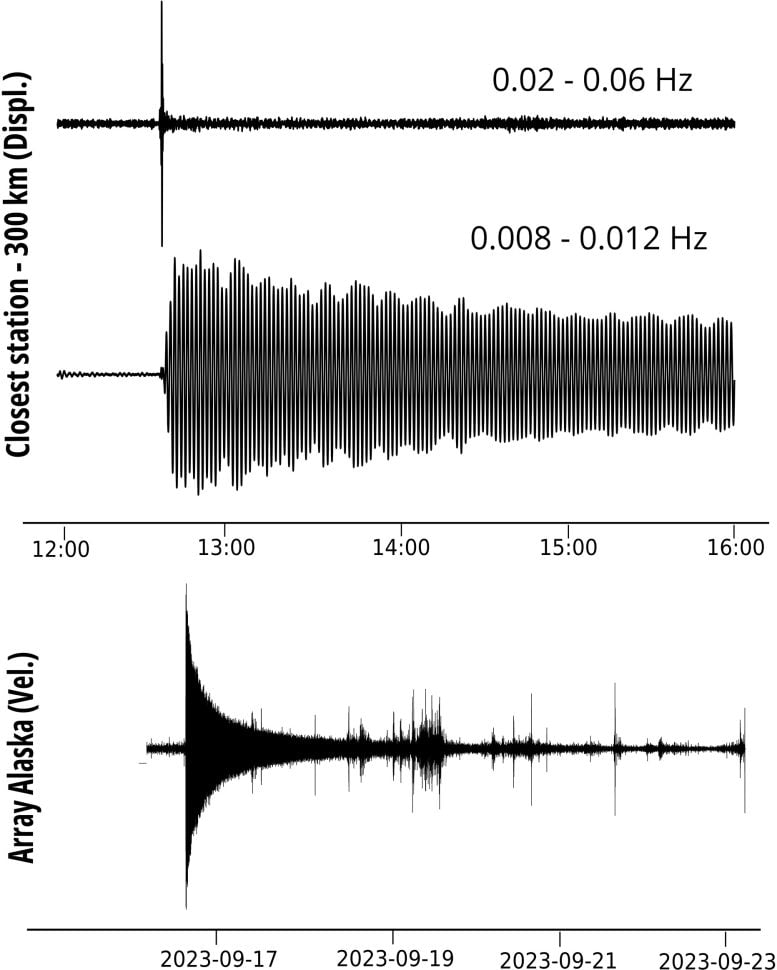The Megatsunami That Rocked Greenland’s East Coast


Seismologists measure tremors from distances up to 5000 km away.
On September 16, 2023, a massive wave struck a fjord on Greenland’s east coast, leaving evidence of flooding up to 200 meters (650 feet) high in some areas. Researchers, led by Angela Carrillo Ponce from the German Research Centre for Geosciences (GFZ), have analyzed seismic data from earthquake monitoring stations worldwide and uncovered another remarkable event. The megatsunami triggered a standing wave that oscillated back and forth in the narrow, uninhabited Dickson Fjord for over a week. The international team has published their findings in the journal The Seismic Records.

Rockslide as triggering event
The tsunami was triggered by a large landslide. Earthquake measuring stations up to 5,000 kilometers away registered the shaking caused by the landslide as a short signal. However, there was also a very long-period (VLP) signal that was recorded by the seismometers for more than a week. Angela Carrillo Ponce, who works as a doctoral student in the “Physics of Earthquakes and Volcanoes” section of the GFZ, says: “The mere fact that the VLP signal of a wave sloshing back and forth triggered by a landslide in a remote area of Greenland can be observed worldwide and for over a week is exciting. That’s why we in seismology have been most concerned with this signal.” Fortunately, the researcher adds, no people were harmed. Only a military base, which was without personnel at the time of the tsunami, was devastated.
Analysis of the seismic signals – shock waves that travel thousands of kilometers in the earth’s crust – showed that a so-called standing wave formed in the fjord after the landslide. Initially, the parts of the flank that fell into the water triggered a giant wave that spread through the entire fjord to the offshore island of Ella, more than 50 kilometers away. Near the point where the rockslide entered the fjord, the maximum height was more than 200 meters, along the coast an average of 60 meters. Parts of the wave apparently spilled back from the steep banks in the narrow fjord and a standing wave began to form, which undulated back and forth for more than a week. However, this wave measured only around 1 meter in height.

Standing wave persisted unusually long
Such standing waves and the resulting long-period signals are already known in research. Such VLP signals are normally associated with large break-offs from glacier edges. “In our case, we also registered a VLP signal”, says Angela Carrillo Ponce, “the unusual thing about it was the long duration”. What was particularly impressive was that the data from seismic stations in Germany, Alaska, and other parts of North America were of very good quality for the analysis. A comparison with satellite images confirmed that the cause of the first seismic signals corresponded well with the strength and direction of the rockfall that triggered the megatsunami. In addition, the authors were able to model the slow decay and the dominant oscillation period of the VLP signals.
This gives the researchers hope that they will be able to detect and analyze other similar events from the past. It is obvious that the retreat of glaciers, which previously filled entire valleys, and the thawing of permafrost are leading to increased landslides. Climate change is accelerating the melting of glaciers and could therefore increase the risk of megatsunamis.
Reference: “The 16 September 2023 Greenland Megatsunami: Analysis and Modeling of the Source and a Week‐Long, Monochromatic Seismic Signal” by Angela Carrillo‐Ponce, Sebastian Heimann, Gesa M. Petersen, Thomas R. Walter, Simone Cesca and Torsten Dahm, 8 August 2024, The Seismic Record.
DOI: 10.1785/0320240013
Source link



